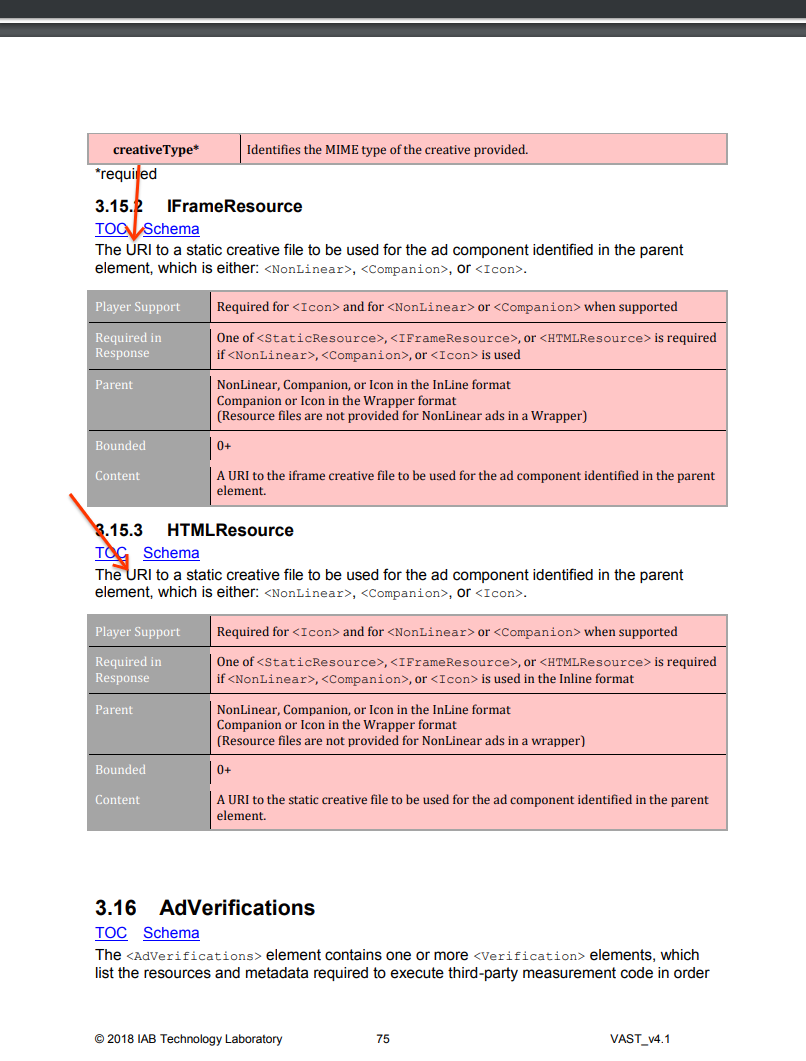The IAB’s Video Ad Serving Template (VAST) specification is a universal XML schema for serving ads to digital video players, and describes expected video player behavior when executing VAST-formatted ad responses. VAST opens up the in-stream digital video advertising marketplace and reduces expensive technical barriers,encouraging advertisers to increase video ad spend.
VAST4 was released in January of 2016. With the proliferation of devices and screen sizes over the last few years, this release was focussed on meeting the challenges around delivering video ads efficiently to this wide variety of devices. This included features like separation of media files from verification and interactive code, a mezzanine file for server side ad insertion, etc.
VAST 4.1 was released in November 2018 with support for Ad Requests, Ad verification with Open Measurement, integration of DAAST for Audio ads, etc.
VAST 4.2 was released in June 2019 with support for interactivity with SIMID (https://github.com/InteractiveAdvertisingBureau/SIMID/).
For more information about the VAST specification, visit the Digital Video Ad Serving Template page on the IAB TechLab website.
For the latest set of VAST4 macros, please visit http://interactiveadvertisingbureau.github.io/vast/vast4macros/vast4-macros-latest.html


